Sheep and cover crops give a lift to yields and soil health
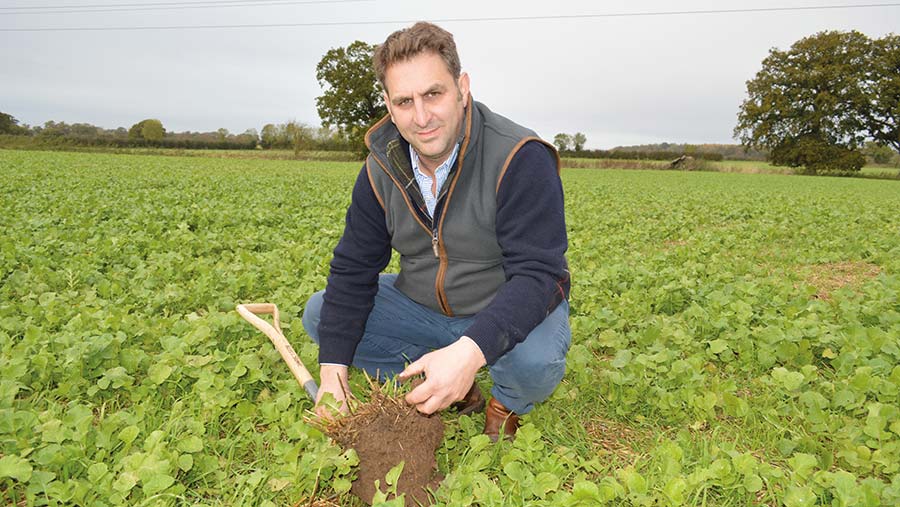 Joe Dilibero © MAG/David Jones
Joe Dilibero © MAG/David Jones Higher spring barley yields and easier drilling conditions are benefiting one Berkshire farming estate after the introduction of cover crops which are heavily grazed off by sheep.
Soil structure and fertility on some of the farm’s light gravel fields has improved, with malting barley yields increased by more than 1t/ha, while earlier spring drilling is now being achieved into good seed-beds.
Farm manager Joe Dilibero says when the sheep flock is removed from the cover crops at the end of February, the ground is in excellent condition to direct-drill a spring crop.
“It’s amazing how friable the soil is once it has dried up after the sheep have been taken off,” he tells Farmers Weekly.
See also: Regenerative agriculture: What to avoid and how to start
Farm facts
Benham Estate, Newbury, Berkshire
- Farms 2,200ha, of which 1,000ha is arable and the rest is in grassland and woods
- Soils – Medium loams with flints, with gravel seams and some clay caps
- Five-year crop rotation: winter wheat/winter or spring barley/oilseed rape/winter wheat
- Break crop of peas, spring beans or winter oats
Soil structure
Cover crops were introduced at the Benham Estate, just west of Newbury, four years ago to help fill a gap when the sheep run out of grass in the winter, and to build a better structure and fertility for the farm’s generally light soils.
Last summer, 100ha of the spring malting barley variety Planet grown on the estate yielded well above the five-year average, and made the specification for brewing at less than 1.85% grain nitrogen.
This coming spring, there will be a switch to a different variety, Laureate, which can be used for brewing or distilling, with a similar 140kg/ha of nitrogen fertiliser set to be applied to the crop.
Some 120ha of cover crops are grown for the 1,100-strong ewe flock to graze over the winter months, while 40ha of stubble turnips are grown to fatten as many lambs as possible
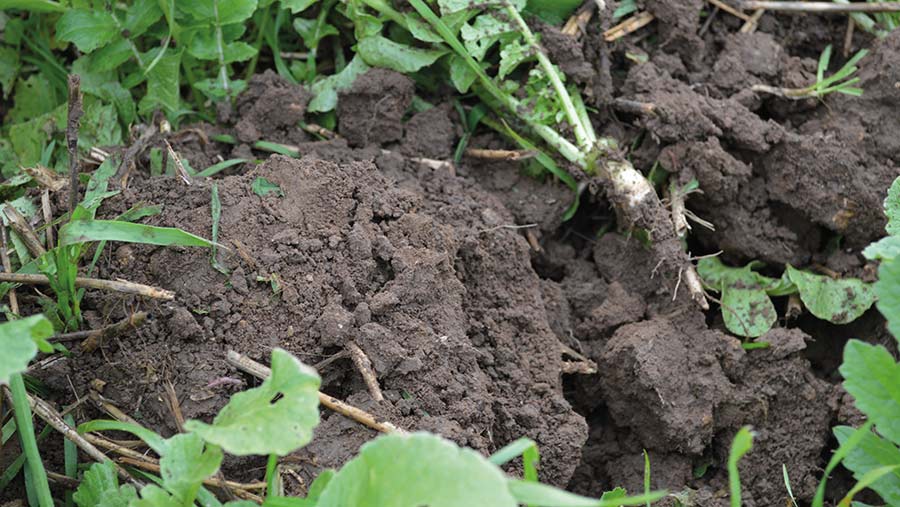
© MAG/David Jones
These are followed by spring crops such as malting barley, beans or peas, and Mr Dilibero has seen a definite improvement in soil conditions when drilling spring crops after the cover crops and stubble turnips.
“The soil structure has improved, allowing us to direct-drill, while the cover crops also prevent our soils slumping in the winter and mop up any excess nitrogen,” he adds.
Sheep and arable
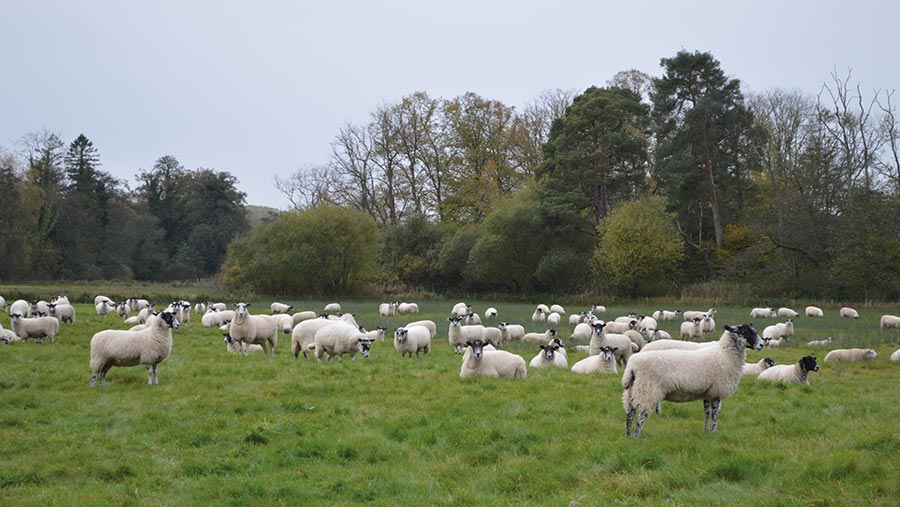
© MAG/David Jones
The use of cover crops has allowed the sheep to be integrated into the arable side of the business, and when they are removed from grazing, the ground can simply be sprayed off with glyphosate and drilled one to two days later.
“Sheep, cover crops and direct drilling are bringing big advantages to the farm, providing more consistent yields from some spring-sown crops, while also enabling us to finish more fat lambs,” Mr Dilibero says.
In addition, growing more spring barley on the farm has helped control blackgrass, as well as improving the soils through the use of cover crops.
All the spring-sown crops are direct-drilled by the farm’s 8m Horsch Sprinter tined drill, along with the winter oilseed rape, while winter cereals are largely established using min-tillage with the same drill.
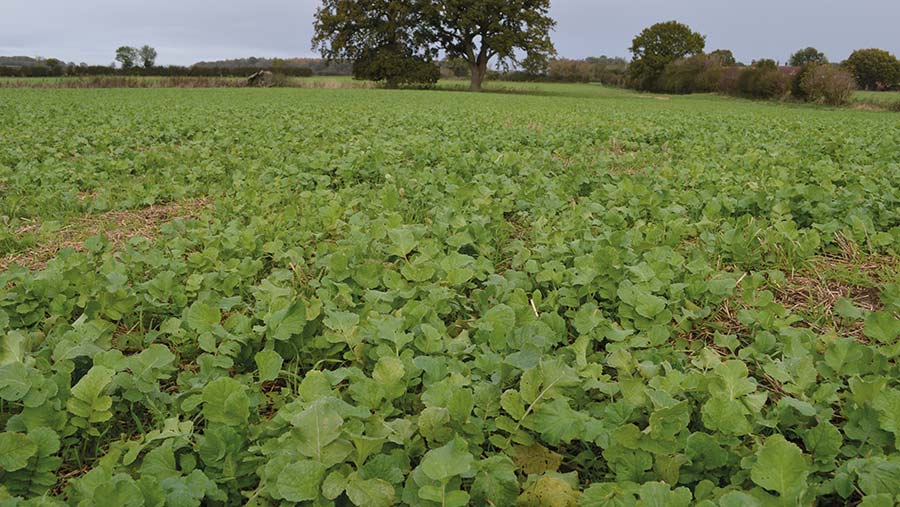
© MAG/David Jones
About 40% of all crops are direct-drilled, but when the soils improve further, more autumn cereals will be established using no tillage, with the eventual aim to move to direct drilling across the whole farm.
Spring beans have not seen as much of a yield benefit as barley when looking at their five-year average, but the crop does provide an excellent entry for winter wheat.
New payments
This all comes at a time when subsidies in the form of the Basic Payment Scheme are being phased out to be replaced by more ecologically focused Environmental Land Management schemes.
As these new payments are likely to favour improving soil health by using methods such as cover crops, direct drilling and carbon capture, the farm is well prepared for the future.
“The cover crops are helping in this transition process to reduce our establishment costs as we look to move towards direct drilling across the whole farm,” Mr Dilibero says.
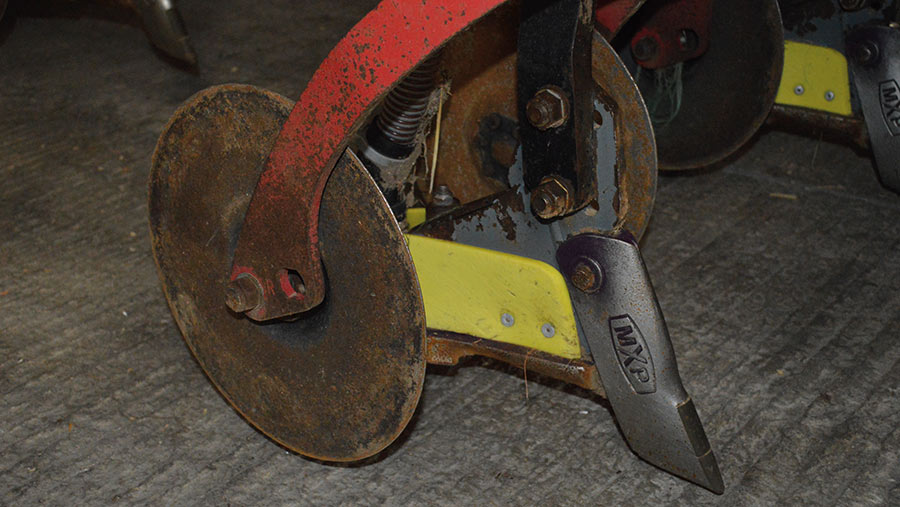
© MAG/David Jones
The cover crop mix used contains phacelia, black oats and fodder radish, and costs about £45/ha for seed. It is established after harvest with the Horsch drill. The stubble turnip seed costs £8/ha.
The sheep were originally on the farm to help manage nearly 500ha of fertile water meadows by the River Kennet and other improved pastureland.
Both areas are in low-input grassland schemes, with a ban on nitrogen fertiliser applications.
Some 200 store cattle graze the meadows in summer, then the North Country Mule breeding flock is used to tidy up the grassland through the autumn.
Sheep flock
The ewes are put to Abermax rams to lamb outside in April, achieving a lambing percentage of 160-170%. Both the sheep and cattle enterprises are profitable, while using grassland unsuitable for arable cropping.
The farm has a full-time contract shepherd who looks after the grazing of the cover crops and stubble turnips, and arranges extra help at busy times such as lambing.
Some 40% of the lambs are sold fat from the stubble turnips, and the remaining 60% go to a 3,600ha sister estate in Stainton le Vale, Lincolnshire, to finish.
The Berkshire and Lincolnshire farms are part of the Sir Richard Sutton Estate, and managed by director of farming Chris Baylis, who is based in Lincolnshire and was the 2017 Farmers Weekly Farm Manager of the Year.
The Berkshire farm also runs a 30,000-hen laying flock supplying supermarket chain Waitrose with more than 10% of its organic free-range eggs.
One option being considered for the future is to convert the whole farm to organic to provide the feed for the layers rather than buy in feed.

